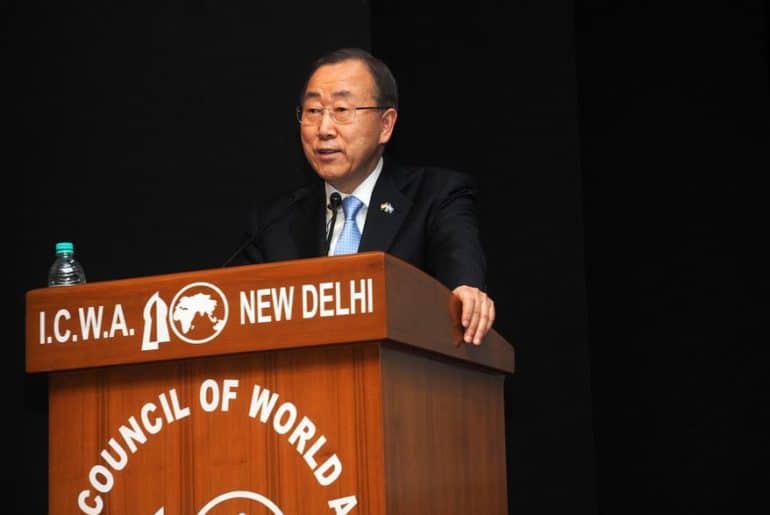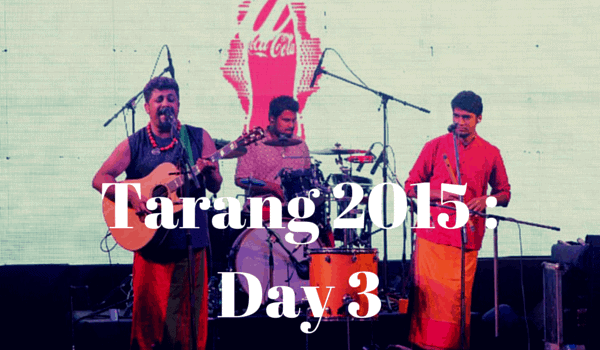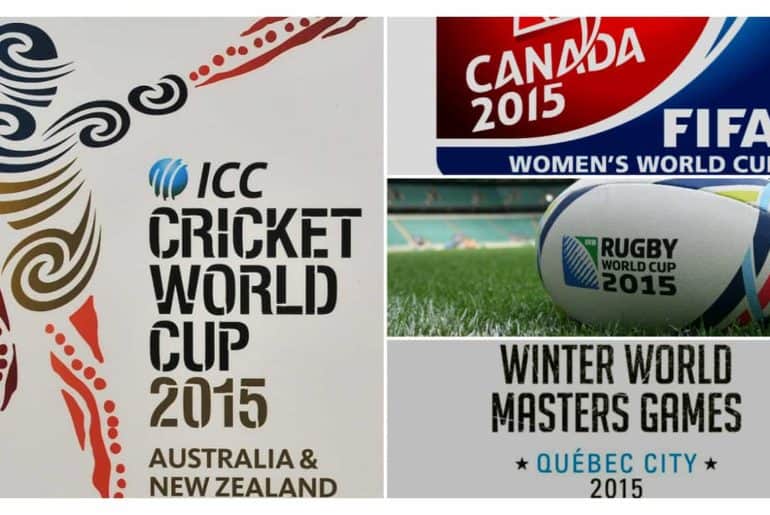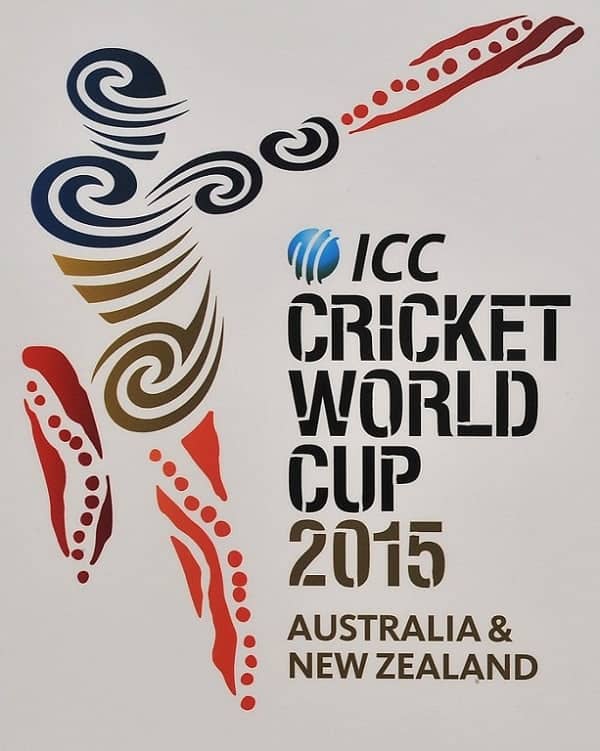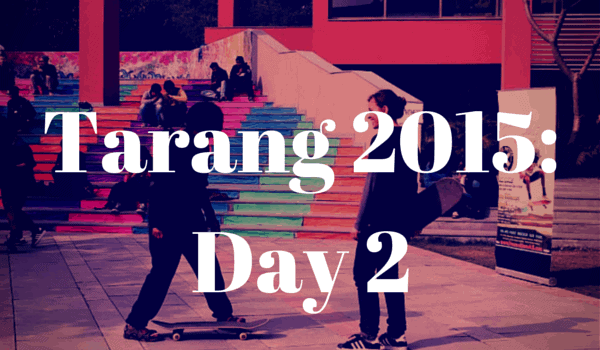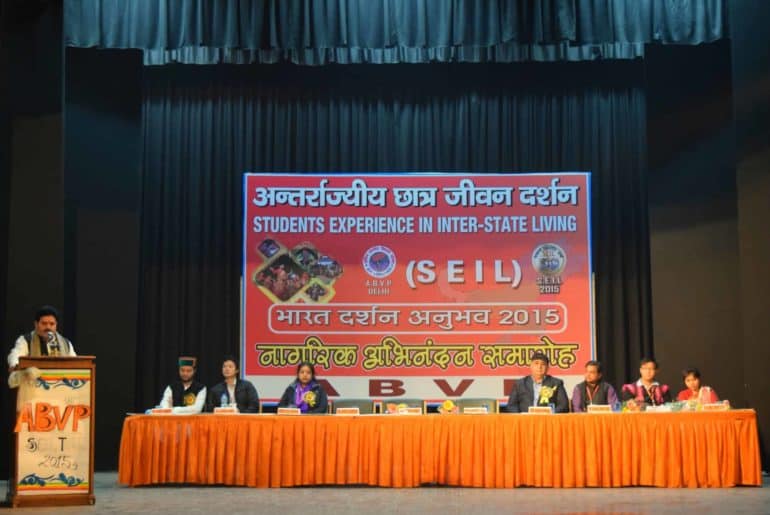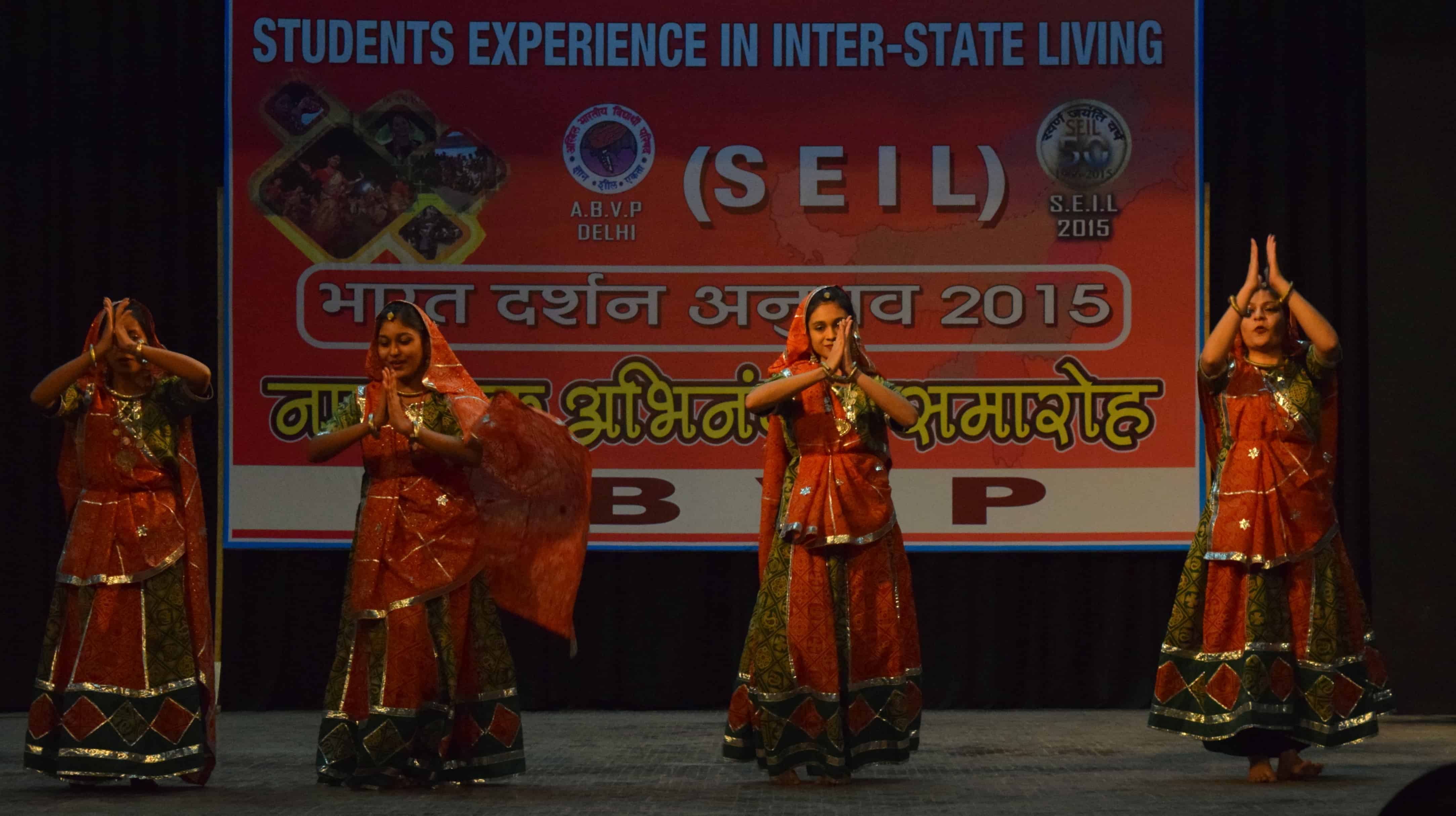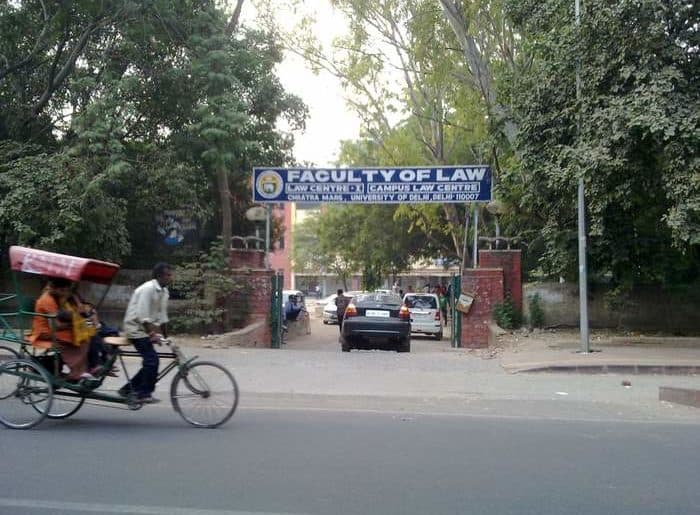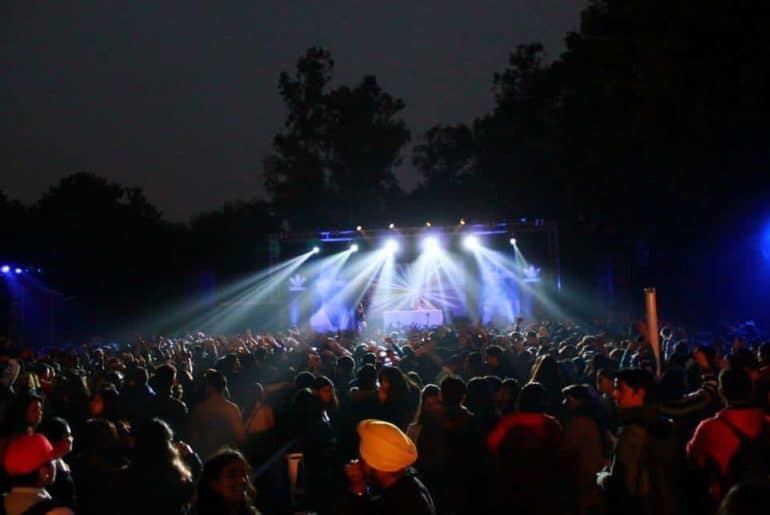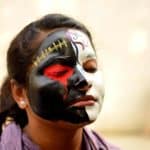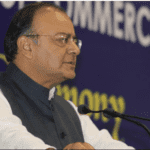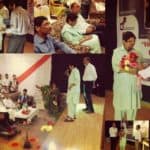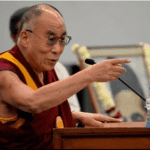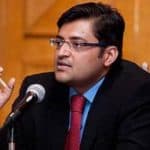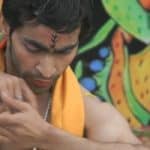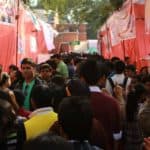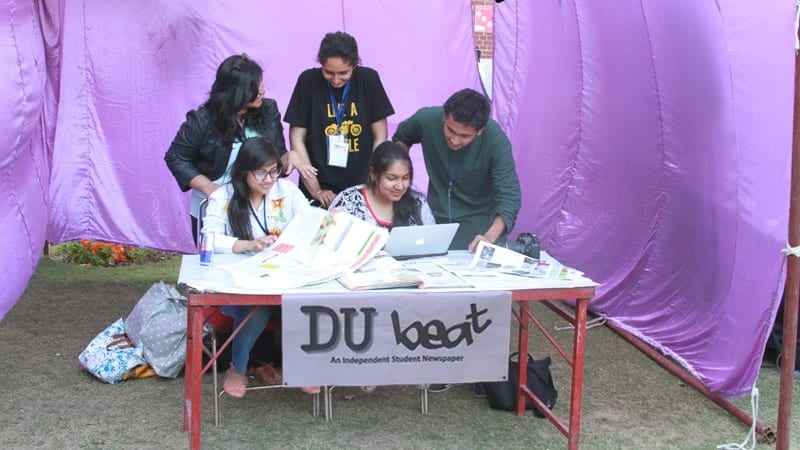Day 2 at Tarang saw another round of competitive, non-competitive and other off-beat events. The major events of the day (those conducted by the performing societies) were Amalgam- the Fusion Band Competition, Mudra- the Classical Solo Dance Competition, the Western Music Trio and Sugam- the Semi-classical solo. Other events included those of the Debating Societies, the Elocution Society, the Creative Writing Societies, the Quiz Society and the Photography and Art societies. The pro-night had two rounds of performances by Raeth and Dualist Inquiry. Day 2 saw as good a footfall as Day 1, thanks to major popular competitions and the informal lot of events.
Amalgam, the fusion band competition was held at the college’s auditorium during the first half of the day. A total of five bands performed and the event was judged by Tuhin Chakravarty, a percussionist with the Indian Ocean. The 3rd prize went to Inayat, whose performers brought a lot of energy to the stage with their original composition, Pancchi and Saiyaan by Kailash Kher. The Hans Raj Project stood 2nd after the band moved the audience and the judge with its soulful original composition. Kirori Mal’s KM Experience, from Musoc, the college’s music society grabbed the top prize after they performed an original piece along with their own arrangement of Nusrat Fateh Ali Khan’s Saawarey. Jayashree Basu, the President of Dhwani, the Indian Music Society of LSR said, “The level of competition has definitely gone up this year and we’ve received more footfall and audience than what we had last year. Even the judge mentioned that the instrumentalists from the bands were exceptional.”
Update: Though the positions had been initially declared as reported, the judge later had a change of heart and awarded both KM Experience and Hans Raj Project the 1st position and Inayat the 3rd position. Any confusion this may have caused is regretted.
Sugam, the Semi-Classical (Light Vocals) Solo Competition organized by the Indian music society, Dhwani of LSR took place on the afternoon of the second day of Tarang 2015. The event saw a large turnout of almost 50 students from 20-25 colleges from universities across Delhi. Hans Raj, Hindu, Faculty of Music, Miranda House, Sri Venkateswara, Kirori Mal, Ramjas, Ashoka University and Amity University were some of the participating colleges. Each college was allowed two entries each. The event was judged by Meera Shirodkar who began her training as a 7-year old from Gandharva Mahavidyalaya. She had formerly been a Mass Communication professor at St. Xavier’s, Mumbai and is currently pursuing her alankaar under Pandit Madhup Mudgal. The performances by the students varied from ghazals to bollywood numbers and continued well into the evening. “Sugam is a sought after competition when it comes to Indian music and it is a great deal for us as organisers. It is immensely competitive thanks to the high number of people who turn up” said Ishita Bajpai, Secretary of Dhwani.
Western Trio Competition- The Western Trio had 12 participating teams, each of which performed for around six minutes each. The performances, as melodious as they could be, had many classic numbers like Hey Jude and Halleluiah. Each team had a maximum of two accompanying instrumentalists, the venue also saw supporters from the participating giving audience to their performances. The first position went to the team from College of Business Studies, the second to Team 2 from Hindu College and the third position was a tie between Gargi College and Team 2 of Jesus and Mary College. The participants, along with the LSR Western Music Society, jammed to I’m yours by Jason Mraz at the end.
Mudra– Mudra, the Solo Indian Classical Dance Competition, saw the participation of 18 dancers from across campuses. The event was judged by renowned classical dancers Vidha Lal and Priya Venkatraman. Before announcing the results, they guided students to work on techniques and edit music with care. The classical dance competition, not frequently braved by male dancers, witnessed two male dancers this year, both of whom grabbed prizes.
Sumit Sridhar of Hindu College was adjudged the winner while Kritika Uppal of Gargi College and Shashank of St.Stephen’s College were runners up.
Masquerade– Hive, the Fine Arts Society, conducted ‘Masquerade’, a mask-painting competition which had everybody’s creative juices flowing. The participants were given six themes- Venice, Rio, Calcutta, Paris, Beijing and Moscow. The 21 participants worked on their masks for some two hours and produced spectacular interpretations of the cities. The first position went to Ishu from Gargi College, the second to Lakshay from Dayal Singh and the third to Geet Saini from College of Art.
Elocution– The Elocution Society of LSR, which is striving to keep the form alive at the university-level, held its Annual Reena Sadhu Memorial Competition which allowed both solo and team entries. The genres could vary from slam poetry to nonsense. The first prize went to Rudraksh from Vivekananda Institute of Professional Studies and the second prize was bagged by Vinayak Pandey from Maharaja Agrasen Institute of Technology.
Kavyanjali– The Hindi Creative Writing Society organized a poetry-reciting competition which brought alive classic works like Basant and Main bharat desh ka vasi hoon. One of the participants also recited Who bachha apne ghar se nikla tha as a tribute to the Peshawar attack victims. The winners were- Noushad from Keshav Mahavidyalaya, Shagun from JNU and Rakhi from Gargi (in that order).
The English and the Hindi Debating Societies also held their conventional debates which set the Delhi debating abuzz once again. Expressions, the English Creative Writing Society, held Mystery Ink- a scrabble- Pictionary- performance mix, which had all the literature-freaks battling it out. The Quiz Society hosted Kab? Kyun? Aur Kahan?, a Bollywood quiz- every Indian cinema-goer’s delight!
Raeth– To replace Kanan Gill, Pakistani rock band Raeth took the stage as the sun set over LSR. The band began the evening with their superhit track, Bhula Do, and ended by singing Vande Mataram, playing a number of Bollywood tracks in between. The lead singer, Wajhi Farouqui, spoke to the audience swaying to the beats. He said that the band postponed a show in Mumbai to be able to perform at LSR.
Dualist Inquiry– The last event of the day, Dualist Inquiry, a Sunburn DJ, played his signatures scores. A renowned guitarist, he kept the crowd on its feet, slowly swaying and taking the music in. Many a round of cheers later, the event drew to a close having eased the tiredness of the day for many.
The college is now gearing up for the final day of Tarang 2015, with competitions like street plays, choirs and choreography lined up. And the most awaited event of the fest- the Raghu Dixit Project!
Priyanka Banerjee
[email protected]
Ishaan Gambhir
[email protected]
Isheeta Sharma
[email protected]
Alankrita Anand
[email protected]


